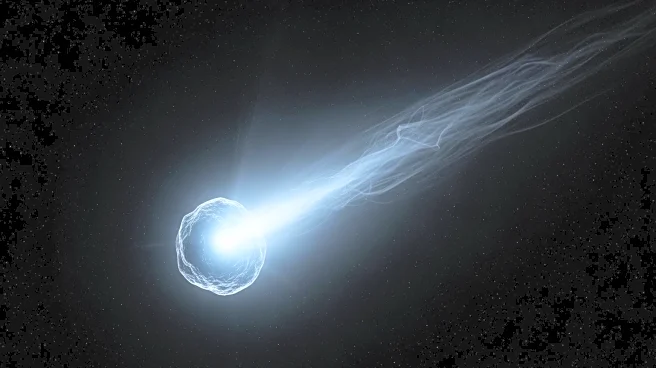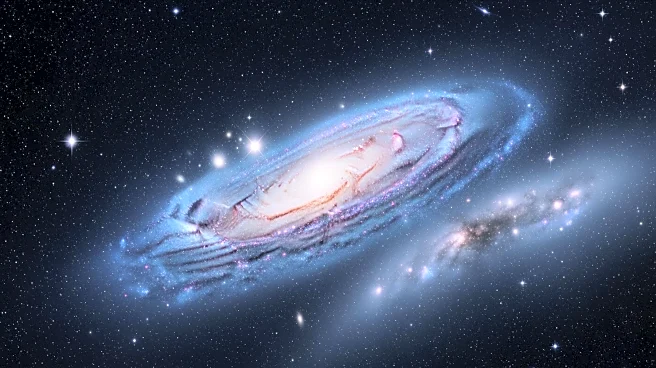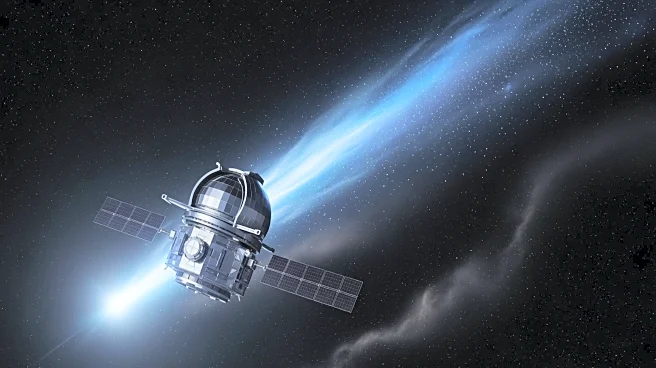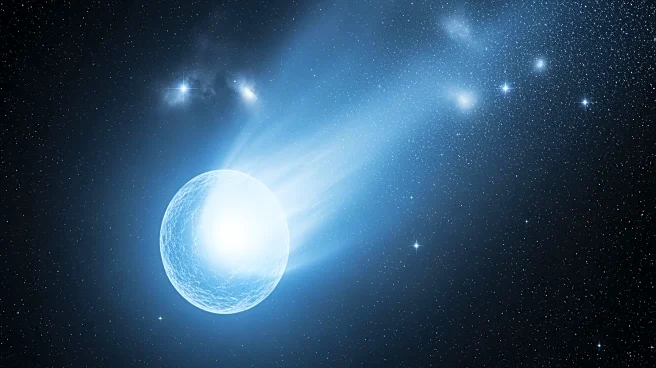What's Happening?
The James Webb Space Telescope (JWST) has provided new infrared images of the Sombrero Galaxy (M104), revealing hidden stars and details of its structure. The galaxy, known for its luminous appearance
and hybrid morphology, features a spiral-like dust disk and a massive elliptical-like central bulge. JWST's observations suggest a long-past merger event, supported by the diverse compositions of its globular clusters. The telescope's Mid-Infrared Instrument (MIRI) shows a warped inner disk and clumpy outer dust ring, indicating active star formation. These findings offer a deeper understanding of the galaxy's history and structure.
Why It's Important?
The insights provided by JWST into the Sombrero Galaxy enhance our understanding of galaxy formation and evolution. The discovery of hidden stars and the evidence of a past merger event contribute to the broader knowledge of cosmic phenomena. This research has implications for astrophysics, as it challenges existing theories about galaxy classification and formation. The ability of JWST to reveal details invisible to optical telescopes underscores the importance of advanced infrared technology in space exploration. These findings may influence future studies on galaxy dynamics and the role of mergers in shaping cosmic structures.
Beyond the Headlines
The observations of the Sombrero Galaxy by JWST highlight the telescope's capability to transform our perception of familiar celestial objects. The galaxy's hybrid morphology raises questions about the classification of galaxies and the processes that lead to their current forms. The diversity in the globular clusters' compositions suggests a complex history involving multiple galaxies, offering a glimpse into the cosmic interactions that shape the universe. This research may prompt further investigations into the role of mergers in galaxy evolution, potentially leading to new models and theories in astrophysics.











